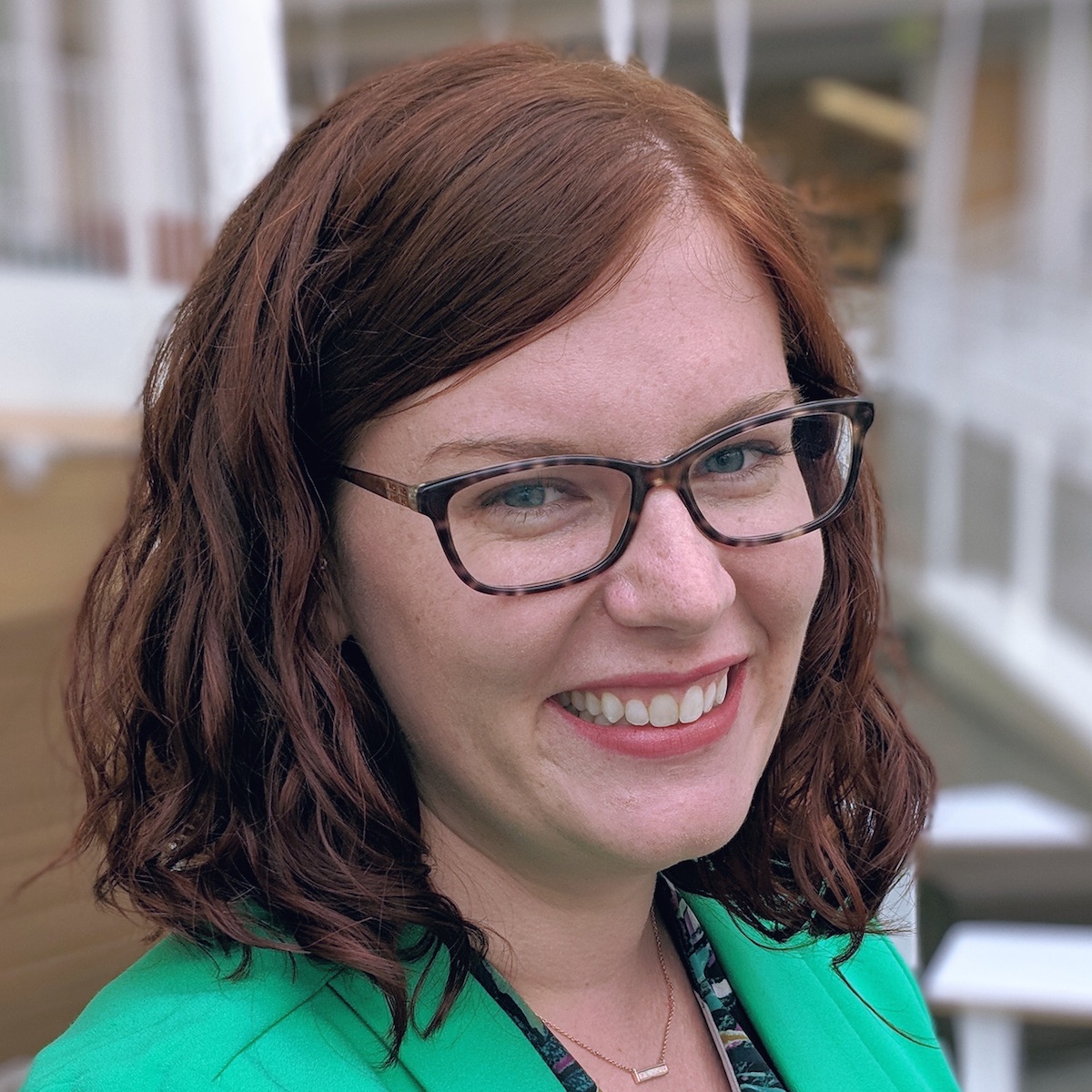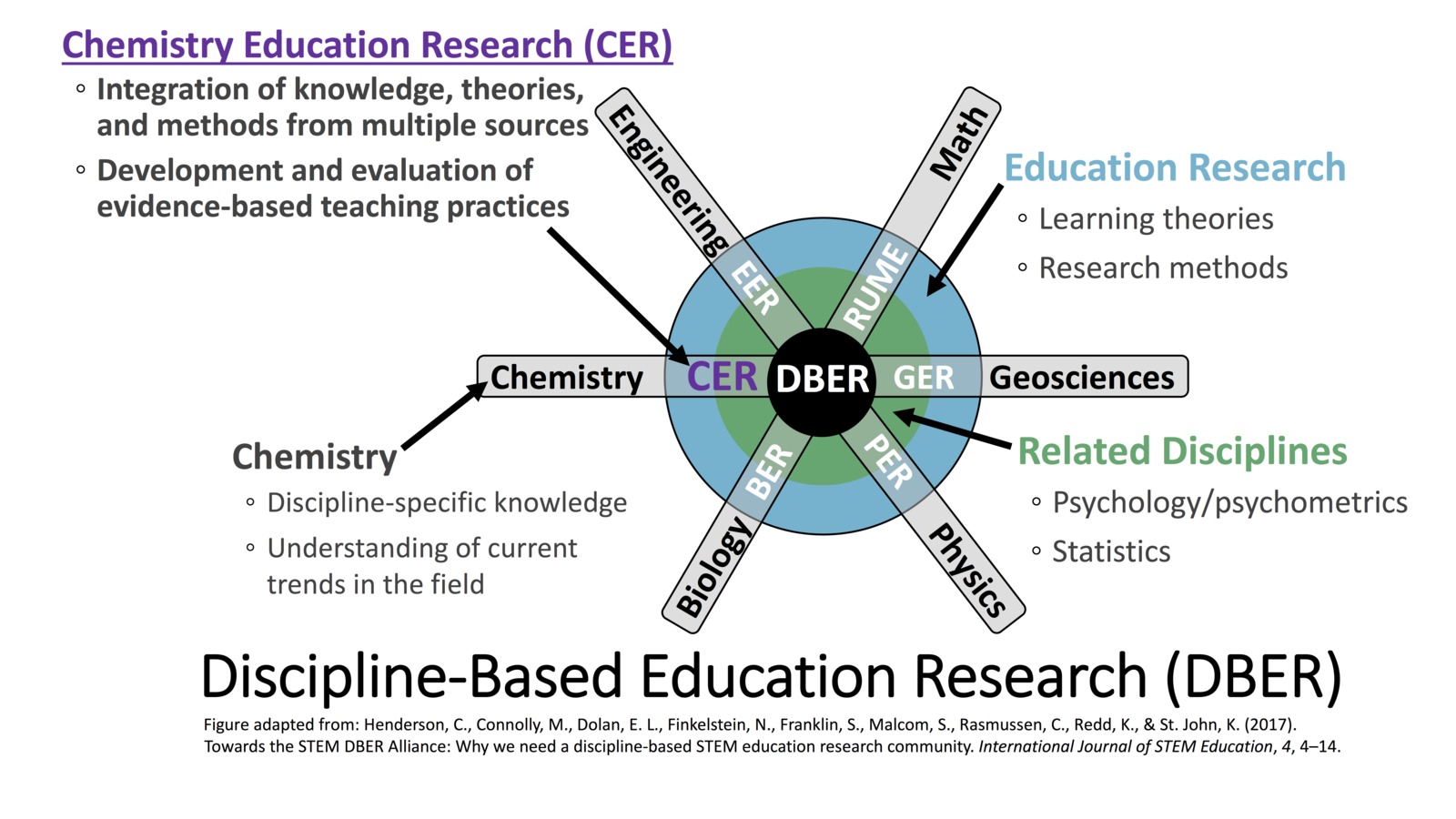Regis Komperda

Associate Professor, Chemical Education
Department of Chemistry and Biochemistry
Center for Research in Mathematics and Science Education
Primary Email: [email protected]
Building/Location
Geology Mathematics Computer Science - 203
6475 Alvarado Rd
#206
San Diego,
CA
92120
Website Links
Bio
Professional experience:
- Assistant Professor, San Diego State University, 2019—
- Postdoctoral Fellow, Barbera Group, Portland State University, 2016—2018
- Lecturer in Chemistry, Wright State University, 2010—2012
- High School Chemistry & Physics Teacher, Minooka Community High School, 2008—2010
Education
- PhD in Chemical Education, Bunce Group, Catholic University of America, 2016
- MS in the Teaching of Chemistry, University of Illinois at Urbana-Champaign, 2008
- BS in Chemistry, Minor in Secondary Education, University of Illinois at Urbana-Champaign, 2007
Areas of Specialization
Chemistry education research (CER) investigates how students learn chemistry and works to develop evidence-based teaching practices. CER is grounded in knowledge of chemistry content and skills and integrates theoretical frameworks and research methodologies from fields including psychology and education. The field of CER is a specific area within the broader discipline-based education research (DBER) community and working in CER offers many opportunities for collaboration with other DBER community members. At SDSU this work is supported by the Center for Research in Mathematics and Science Education (CRMSE), where I am a member.

My research is primarily quantitative and has two main areas of emphasis. The first focus is investigating issues of measurement and psychometric instrumentation in chemistry education. Having tools available to make high quality measurements is crucial to generating valid and reliable data. These data support chemistry and other discipline-based education researchers when measuring variables in various classroom and research contexts. Current projects include psychometric evaluation of instruments measuring student motivation, student study approaches, instructor teaching approaches, and learning environment characteristics. These instruments support my second focus on building larger statistical models using latent variable techniques, such as structural equation modeling, to better understand how the adoption of evidence-based teaching practices influences student outcomes in chemistry courses. A common theme throughout all areas of my research is use of the open-source R statistical software to encourage reproducible research through code sharing.
Research
The Chemistry Instrument Review and Assessment Library (CHIRAL)
The CHIRAL project (NSF #1914996) is a collaborative research grant with Dr. Jack Barbera at Portland State University and Dr. Jordan Harshman at Auburn University. Results of this project include the development of a website (chiral.chemedx.org) that hosts information about assessment instruments (e.g., surveys, tests, etc.) used to measure students, instructors, and environments in a chemistry education context.
Our team at SDSU is responsible for reading the chemistry education literature including journals such as Chemistry Education Research and Practice and the Journal of Chemical Education to identify instruments. These instruments are coded based on what they are measuring and the types of validity and reliability evidence they provide for data collected with the instruments. To date we have identified over 1,300 instances of instrument use within ~800 publications. Information about 526 instruments is currently available on the CHIRAL website.
Publications from the CHIRAL project:
Lazenby, K., Tenney, K., Marcroft T., & Komperda, R. (2023). Practices in instrument use and development in Chemistry Education Research and Practice 2010-2021. Chemistry Education Research and Practice. doi: 10.1039/D2RP00275B
Barbera, J., Harshman, J., & Komperda R. (2023). The Chemistry Instrument Review and Assessment Library (CHIRAL): A new resource for the chemistry education community. Journal of Chemical Education. 100(4), 1455–1459. doi: 10.1021/acs.jchemed.2c00762 [ACS Editors Choice Designation]
Mentored Pathways from Community College to Graduate School and Chemistry Careers
The Mentored Pathways project is a collaborative NSF S-STEM grant (#1929758) with $5 million in funding to provide scholarships for STEM students at Southwestern College and a pathway for transferring to SDSU as chemistry and biochemistry majors in undergraduate and graduate degree programs. To date the project has supported over 100 students at Southwestern College and 30 at SDSU with scholarships, mentorship, research experiences, and STEM enrichment activities.
Our team at SDSU is leading the project data collection and evaluation efforts. We are examining student research experiences with the Undergraduate Research Student Self-Assessment (URSSA) and Entering Research Learning Assessment (ERLA) surveys. Additionally, we measure the affective impact of mentored experiences using instruments grounded in Social Cognitive Career Theory to see how the Mentored Pathways program is impacting belonging in STEM.
Co-PI Dr. Byron Purse is leading the mentor training efforts and Co-PI Dr. Mike Bergdahl leads the placement of undergraduate students into research experiences as well as a summer introduction to research course.
Media about the Mentored Pathways project:
$5 Million STEM Grant Fosters Future Chemists.” SDSU NewsCenter. (2019, October).
Measuring Constructivism with the Community of Inquiry Framework
This project explores how a constructivist learning environment, as measured by the Community of Inquiry (CoI) survey, influences student academic and affective outcomes. We are utilizing a highly quantitative approach in this project and have collected over 3,000 responses from students at institutions across the Western and Midwestern United States. These data have been used for confirmatory factor analysis, measurement invariance testing, and structural equation modeling. Results indicate that cognitive presence is a strong direct predictor of student outcomes while teaching presence plays a more indirect role.
Publications
Visit Google Scholar for the most current list of publications.
Corresponding authors are denoted with *. SDSU graduate student mentees are indicated with superscript “G”. Postdoctoral scholars in the Komperda group are indicated with superscript “P”
*Grunspan, D. Z., Komperda, R., Offerdahl, E. G., Abraham, A. E., Etebari, S., Maas, S. A., Roberts, J. A., Ghafoor, S., & Brownell, S. E. (2024). Importance of undergraduate institution prestige in physics faculty hiring networks. Physical Review Physics Education Research, 20(1), 010144. doi: 10.1103/PhysRevPhysEducRes.20.010144
*Cui, Q., Harshman, J. & Komperda, R. (2024). Validity and reliability of survey data: Key to empowering chemical health and safety research. ACS Chemical Health & Safety. doi: 10.1021/acs.chas.3c0011 [ACS Editors Choice Designation]
*Bunce, D. M., Schroeder, M., Luning Prak, D., Teichert, M., Dillner, D., McDonald, L., Midgette, D., *Komperda, R. (2023). Impact of clicker and confidence questions on the metacognition and performance of students of different achievement groups in general chemistry. Journal of Chemical Education doi: 10.1021/acs.jchemed.2c00928
PLazenby, K., GTenney, K., GMarcroft T., & *Komperda, R. (2023). Practices in instrument use and development in Chemistry Education Research and Practice 2010-2021. Chemistry Education Research and Practice. doi: 10.1039/D2RP00275B
*Barbera, J., *Harshman, J., & *Komperda R. (2023). The Chemistry Instrument Review and Assessment Library (CHIRAL): A new resource for the chemistry education community. Journal of Chemical Education. 100(4), 1455–1459. doi: 10.1021/acs.jchemed.2c00762[ACS Editors Choice Designation]
GCorrales, A. & *Komperda, R. (2022). Characterizing graduate student identity development in the context of an integrated research and teaching graduate student training course. Journal of Chemical Education. 99(4), 1747-1757. doi: 10.1021/acs.jchemed.1c00927
*Barbera, J., Naibert, N., Komperda, R., & Pentecost, T. C. (2021). Clarity on Cronbach’s alpha use. Journal of Chemical Education.98(2), 257-258. doi: 10.1021/acs.jchemed.0c00183
Rocabado, G. A., *Komperda, R., Lewis, J. E., & *Barbera, J. (2020). Addressing diversity and social inclusion through group comparisons: A primer on measurement invariance testing. Chemistry Education Research and Practice, 21(3), 969–988. doi: 10.1039/D0RP00025F
Komperda, R., Hosbein, K. N., Phillips, M. M., & *Barbera, J. (2020). Investigation of evidence for the internal structure of a modified Science Motivation Questionnaire II (mSMQ II): A failed attempt to improve instrument functioning across course, subject, and wording variants. Chemistry Education Research and Practice, 21(3), 893-907. doi: 10.1039/D0RP00029A
Teichert, M. A., Schroeder, M. J., Lin, S., Dillner, D. K., Komperda, R., & *Bunce, D. M. (2020). Problem-solving behaviors of different achievement groups on multiple-choice questions in general chemistry. Journal of Chemical Education, 97(1), 3-15. doi: 10.1021/acs.jchemed.9b00774
Komperda, R., Pentecost, T. C., & *Barbera, J. (2018). Moving beyond alpha: A primer on alternative sources of single-administration reliability evidence for quantitative chemistry education research. Journal of Chemical Education. 95(9), 1477-1491. doi: 10.1021/acs.jchemed.8b00220
Komperda, R., Hosbein, K. N., & *Barbera, J. (2018). Evaluation of the influence of wording changes and course type on motivation instrument functioning in chemistry. Chemistry Education Research and Practice, 19(1), 184–198. doi: 10.1039/C7RP00181A
Komperda, R., Barbera, J., Shortlidge, E. E., & Shusterman, G. P. (2018). Connecting chemistry to community with deliberative democracy. In C. Maguire & R. Sheardy (Eds.), Citizens First! Democracy, Social Responsibility and Chemistry (pp. 81–98). Washington, DC: American Chemical Society. doi: 10.1021/bk-2018-1297.ch006
Komperda, R. (2017). Likert-type survey data analysis with R and RStudio. In T. Gupta (Ed.), Computer-Aided Data Analysis in Chemical Education Research (CADACER): Advances and avenues (pp. 91–116). Washington, DC: American Chemical Society. doi: 10.1021/bk-2017-1260.ch007
*Bunce, D. M., Komperda, R., Lin, S., Schroeder, M., Dillner, D., Teichert, M. A., & Hartman, J. R. (2017). Differential use of study approaches by students of different achievement levels. Journal of Chemical Education, 94(10), 1415–1424. doi: 10.1021/acs.jchemed.7b00202
*Bunce, D. M., Komperda, R., Dillner, D., Lin, S., Schroeder, M., & Hartman, J. R. (2017). Choice of study resources in general chemistry by students who have little time to study. Journal of Chemical Education, 94(1), 11–18. doi: 10.1021/acs.jchemed.6b00285
Bunce, D. M. & Komperda, R. (2014). Matching the evaluation plan to the question. In L. K. Kendhammer & K. L. Murphy (Eds.), Innovative uses of assessments for teaching and research (pp. 7–25). Washington, DC: American Chemical Society. doi: 10.1021/bk-2014-1182.ch002
